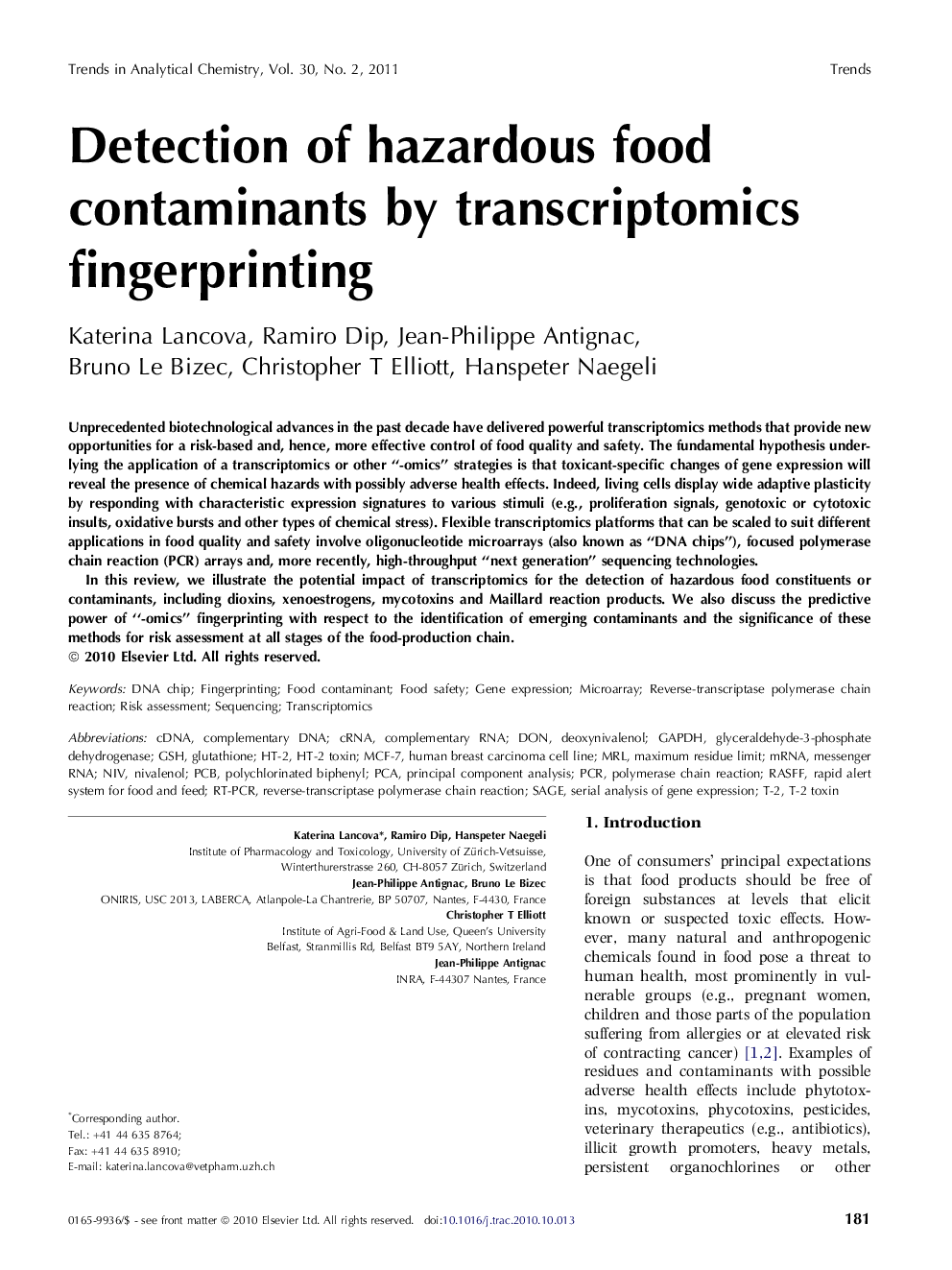| کد مقاله | کد نشریه | سال انتشار | مقاله انگلیسی | نسخه تمام متن |
|---|---|---|---|---|
| 1248644 | 970452 | 2011 | 11 صفحه PDF | دانلود رایگان |

Unprecedented biotechnological advances in the past decade have delivered powerful transcriptomics methods that provide new opportunities for a risk-based and, hence, more effective control of food quality and safety. The fundamental hypothesis underlying the application of a transcriptomics or other “-omics” strategies is that toxicant-specific changes of gene expression will reveal the presence of chemical hazards with possibly adverse health effects. Indeed, living cells display wide adaptive plasticity by responding with characteristic expression signatures to various stimuli (e.g., proliferation signals, genotoxic or cytotoxic insults, oxidative bursts and other types of chemical stress). Flexible transcriptomics platforms that can be scaled to suit different applications in food quality and safety involve oligonucleotide microarrays (also known as “DNA chips”), focused polymerase chain reaction (PCR) arrays and, more recently, high-throughput “next generation” sequencing technologies.In this review, we illustrate the potential impact of transcriptomics for the detection of hazardous food constituents or contaminants, including dioxins, xenoestrogens, mycotoxins and Maillard reaction products. We also discuss the predictive power of “-omics” fingerprinting with respect to the identification of emerging contaminants and the significance of these methods for risk assessment at all stages of the food-production chain.
Journal: TrAC Trends in Analytical Chemistry - Volume 30, Issue 2, February 2011, Pages 181–191